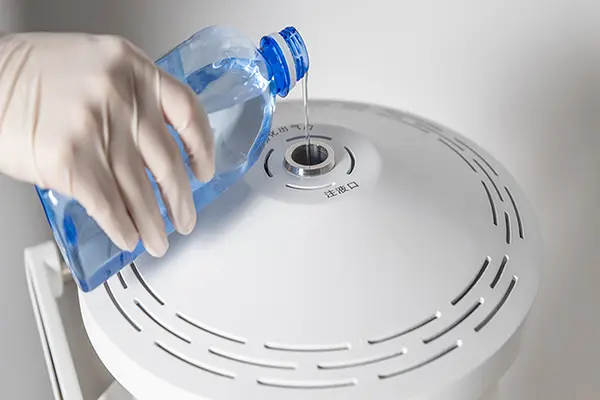Conquering Contamination: A Guide to Ventilator Cleaning and Sterilization
Ventilators, those life-saving machines that breathe for those who cannot, are vital pieces of medical equipment. But just like any medical device, they require meticulous cleaning and sterilization to prevent the spread of germs and ensure patient safety. So, how do you effectively clean and sterilize a ventilator? Fear not, fellow healthcare workers and medical professionals, for this guide will equip you with the knowledge and confidence to combat contamination and keep your ventilators operating optimally.

Ventilators are complex machines with numerous components, both internal and external, that come into contact with a patient's respiratory system. This creates an ideal environment for the growth and spread of bacteria, viruses, and other pathogens. If not properly disinfected, these pathogens can lead to healthcare-associated infections (HAIs), posing a serious threat to patients, especially those with compromised immune systems.
Decontamination: The First Line of Defense
Before embarking on the sterilization process, thorough cleaning, also known as decontamination, is crucial. This involves removing visible dirt, debris, and organic matter from the ventilator's surfaces using appropriate cleaning agents and disinfectants.
Here's how to effectively decontaminate a ventilator:
- Disassemble the ventilator: Following the manufacturer's instructions, disassemble the ventilator into its individual components, focusing on areas that come into direct contact with the patient, such as the breathing circuit, mask, and humidifier.
- Pre-clean the components: Immerse the disassembled components in a pre-cleaning solution that breaks down organic matter. This can be a commercially available enzymatic detergent or a diluted bleach solution.
- Manual cleaning: Using brushes and sponges, meticulously scrub the surfaces of all components, paying close attention to crevices and hard-to-reach areas.
- Rinse and dry: Thoroughly rinse the components with clean water to remove any cleaning solution residue. Allow them to air-dry or use a clean towel to expedite the process.
Sterilization: The Final Barrier Against Infection
Once decontaminated, the ventilator components are ready for sterilization. This process utilizes physical or chemical methods to eliminate all viable microorganisms, including bacteria, viruses, and spores.
Common Sterilization Methods:
- Autoclaving: This method uses high pressure and steam to sterilize the components. It is considered the gold standard for sterilization and is effective against all forms of microorganisms.
- Chemical vapor sterilization: This method involves exposing the components to a chemical vapor, such as hydrogen peroxide, that kills microorganisms.
- Gas sterilization: This method utilizes ethylene oxide gas to sterilize the components. It is effective against all forms of microorganisms, including spores.
Choosing the Right Sterilization Method:
The choice of sterilization method depends on several factors, such as the type of ventilator, the materials of the components, and the availability of resources. It's crucial to consult the manufacturer's recommendations and follow established protocols to ensure effective sterilization.
Beyond the Basics: Additional Tips for Ventilator Disinfection
- Always wear personal protective equipment (PPE) when cleaning and sterilizing the ventilator.
- Never use harsh chemicals or abrasive cleaners, as they can damage the ventilator's components.
- Store the cleaned and sterilized components in a clean, dry environment.
- Maintain a regular cleaning and sterilization schedule to prevent the buildup of contaminants.
- Follow the manufacturer's instructions for specific cleaning and sterilization procedures for your ventilator model.
Conclusion
By diligently following these guidelines for cleaning and sterilizing ventilators, you can play a critical role in preventing HAIs and ensuring the well-being of patients. Remember, meticulous attention to detail, proper hygiene practices, and adherence to established protocols are essential in safeguarding patient health and creating a safe and healthy environment in healthcare settings.
FAQs:
Q: How often should a ventilator be cleaned and sterilized?
A: The frequency of cleaning and sterilization depends on the type of ventilator and its usage. However, it's generally recommended to clean and disinfect the ventilator after each patient use and at least daily.**
Q: Is it safe to use a commercially available disinfectant spray to clean a ventilator?
A: While some commercially available disinfectants may be effective against certain pathogens, it's crucial to use only disinfectants approved by the manufacturer for your specific ventilator model. Using unauthorized disinfectants can damage the equipment and compromise its functionality.